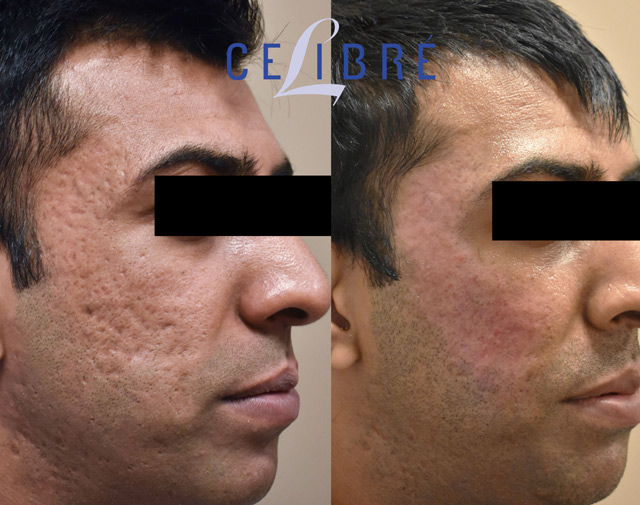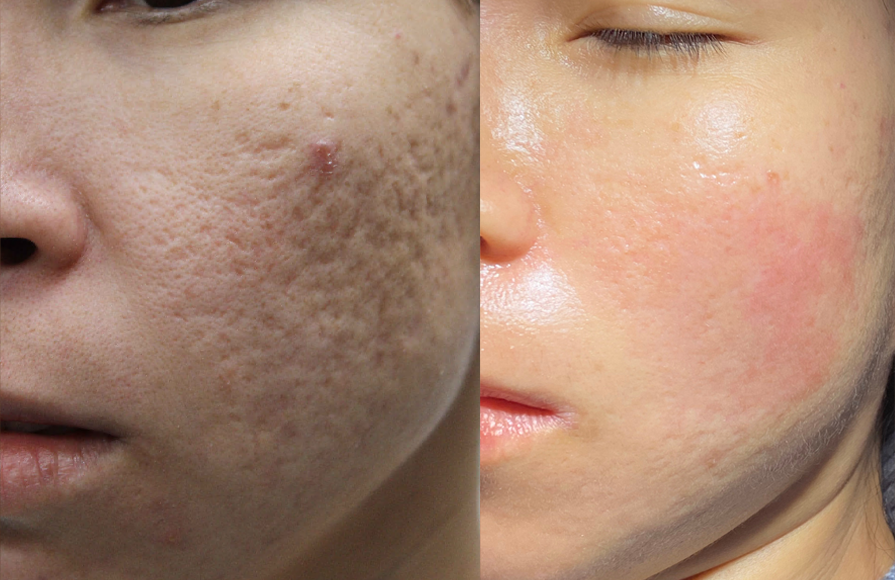Comprehending the Numerous Skin Problem and Reliable Therapy Alternatives for Acne Scars
Acne scars represent an intricate interplay of skin disease that dramatically impact people' self-confidence and overall skin health and wellness. Recognizing the unique types of acne scars-- hypertrophic and atrophic-- along with their underlying reasons, is pivotal for establishing efficient treatment techniques. Different healing alternatives exist, ranging from innovative skin-related treatments to natural treatments. However, the efficacy of these treatments typically pivots on customized evaluations by qualified experts. As we check out the landscape of acne mark management, it comes to be obvious that the trip toward more clear skin might include greater than just topical services.
Types of Acne Scars

In contrast, hypertrophic marks arise from an overproduction of collagen throughout the healing procedure, leading to elevated locations on the skin. These scars are often strong and can vary in shade, in some cases appearing red or darker than the surrounding skin.
Recognizing these kinds of acne marks is crucial for creating an efficient therapy plan - acne scars. Choices might include chemical peels, laser treatment, microneedling, or facial fillers, customized to the specific mark type. A detailed appointment with a skin doctor can aid identify one of the most suitable treatment, considering the individual's skin kind, mark severity, and total skin wellness
Root Causes Of Acne Scarring
Marking occurs as an outcome of the body's all-natural recovery response to swelling and injury brought on by acne lesions. When acne types, it sets off an inflammatory reaction, causing the release of various cytokines and growth variables that promote healing. This procedure can often lead to excessive cells development or poor repair work, resulting in marks.
The key reasons of acne scarring include the severity of the acne itself, duration of the sores, and private skin types. Extreme inflammatory acne, such as blemishes and cysts, is most likely to lead to scarring due to much deeper tissue damage. Furthermore, incorrect handling of acne sores, such as picking or squeezing, can intensify cells injury and inflammation, increasing the chance of scarring.
Hereditary tendency additionally plays a significant role; individuals with a family history of scarring are at a higher risk. Skin kind and shade can influence mark development, as darker skin tones might experience post-inflammatory hyperpigmentation, while lighter skin might develop atrophic marks.
Eventually, recognizing these reasons is crucial in taking care of acne and mitigating the capacity for scarring.

Therapy Alternatives for Scarring
Reliable therapy options for acne scarring vary relying on the type and intensity of the marks. Usually categorized into atrophic, hypertrophic, and keloid marks, these problems require customized approaches for optimal results.
For atrophic scars, which are identified by a loss of tissue, therapies such as chemical peels, microdermabrasion, and laser treatment are frequently employed. These approaches promote skin renewal and stimulate collagen manufacturing, thus boosting skin texture. Subcision, a minimally invasive treatment, can additionally work by damaging up coarse bands beneath the skin.
Keloid and hypertrophic marks can be more challenging to deal with. Options consist of corticosteroid injections to minimize swelling and flatten the marks. Sometimes, cryotherapy or laser therapy may be suggested to lessen their appearance.
Surgical options are readily available for extreme scarring, where excision or skin grafting may be necessary. It's vital for individuals to consult with a skin specialist to evaluate their certain scar type and go over one of the most ideal therapy plan. Integrating multiple therapies usually produces the most effective end results, making certain that each client's distinct skin problem is addressed successfully.
Natural Home Remedy and All-natural Solutions
All-natural solutions and natural home remedy can give an accessible method for individuals seeking to boost the appearance of acne marks (acne and acne scars treatment). Numerous ingredients located in the home kitchen area have actually demonstrated possible benefits in look at this web-site improving skin structure and promoting recovery

One more effective alternative is lemon juice, which serves as an all-natural exfoliant and can lighten hyperpigmentation. Nonetheless, it should be made use of cautiously, as it might create photosensitivity. Oatmeal masks are also useful; their mild peeling can aid remove dead skin cells while comforting irritation.
Vital oils, such as tea tree oil and lavender oil, can further support mark healing as a result of their antimicrobial residential or commercial properties. It is critical to execute a patch examination prior to using any remedy to make sure there are no negative reactions. These natural remedies can be a corresponding strategy in the trip to diminish acne scars.
Stopping Future Scarring
Adopting a positive strategy to skin care can considerably decrease the threat of establishing future acne marks. Normal cleaning, exfoliation, and hydration can aid preserve skin wellness and protect against stopped up pores.
Furthermore, staying clear of the lure to squeeze or select acne sores is crucial, as this can result in inflammation and succeeding scarring. Rather, individuals need to focus on applying topical therapies that promote recovery and decrease swelling. Components such as salicylic acid, benzoyl peroxide, and retinoids are understood for their efficacy in managing acne and lessening scars.
Sun security is one more crucial component; exposure to UV rays can darken scars and impede healing. Consequently, using a broad-spectrum sun block daily can alleviate these results important source - acne scars treatment.
Lastly, preserving a healthy and balanced diet plan rich in antioxidants and staying moisturized supports skin regeneration. By carrying out these safety nets, individuals can substantially reduce their threat of future scarring and promote general skin health.
Conclusion
In final thought, a detailed understanding of acne scars, including both atrophic and hypertrophic kinds, is crucial for efficient therapy methods. Appointment with a dermatologist remains important to design personalized approaches that take into consideration private skin kinds and scar extent, ultimately improving the efficiency of mark administration techniques.
Acne scars stand for a complex interplay of skin conditions that considerably impact individuals' self-esteem and general skin health. The two key classifications of acne scars are atrophic and hypertrophic scars. These scars are more classified into three subtypes: ice pick marks, which are narrow and deep; boxcar scars, which are larger and have well-defined edges; and rolling marks, which anonymous produce a wave-like appearance due to irregular skin appearance.
A detailed appointment with a dermatologist can aid establish the most suitable intervention, taking into account the individual's skin kind, mark intensity, and general skin wellness.
Consultation with a dermatologist continues to be essential to create individualized techniques that think about individual skin types and mark intensity, eventually boosting the effectiveness of scar administration techniques.